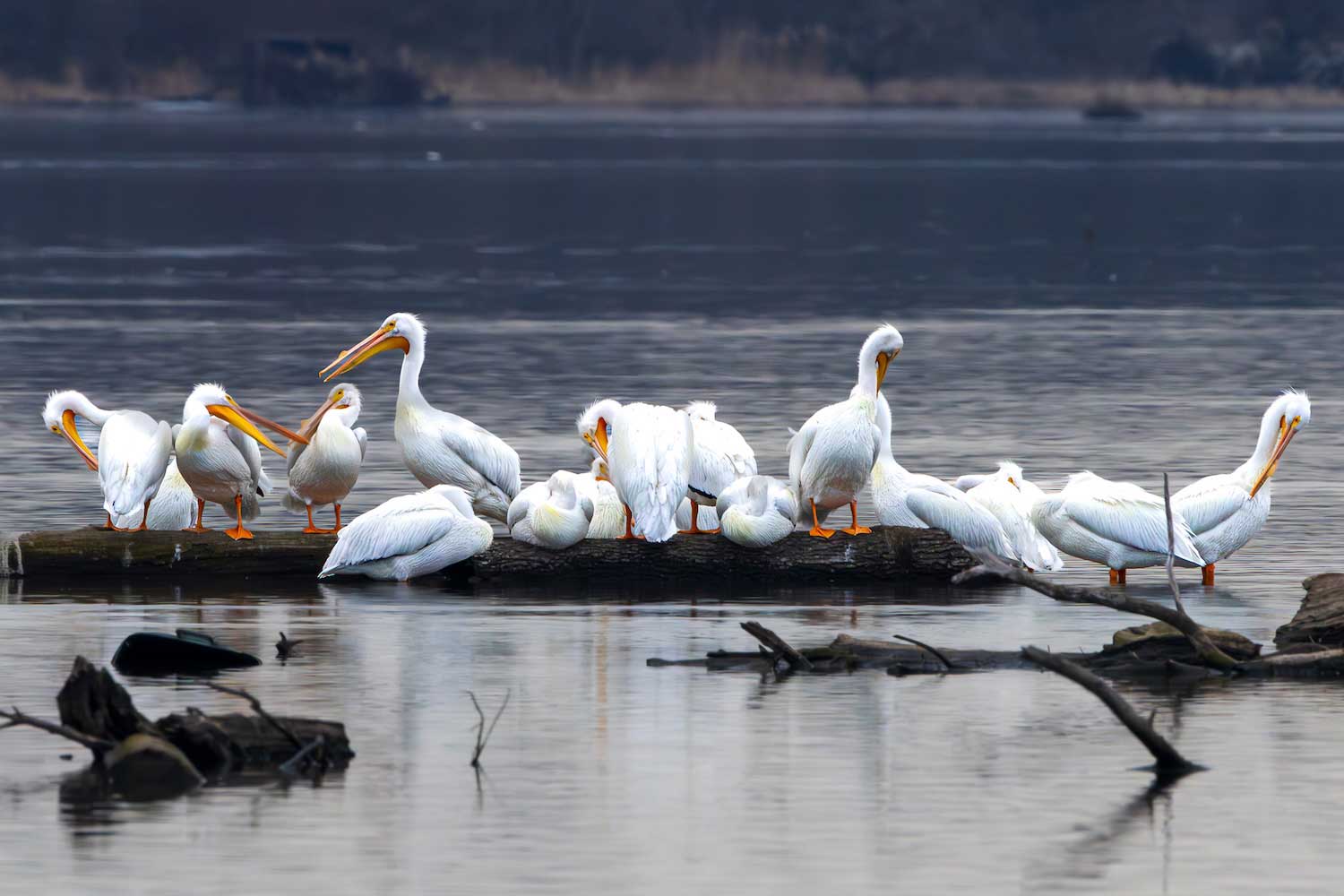Migration watch: Pelicans are back in Will County

Good news for avid birders — and those of us eagerly anticipating spring: The pelicans having been spotted flying overhead and making pit stops at various waterways around Will County over the past few weeks.
The pelicans that pass through Will County each spring and fall are American white pelicans, one of the largest birds in North America, according to the Cornell Lab of Ornithology. These large white birds are clunky and awkward on land, but they are good swimmers and graceful flyers. In flight is where they reveal a secret as well: The pelicans appear all white on land or in water, but in flight reveal jet-black feathers on their wingtips that starkly contrast their otherwise white plumage.
Pelicans usually arrive in Will County in late February or early March as they make the return trip to their breeding grounds in Canada and Dakotas. We can expect to see them locally until early May. They will return again beginning in late August or early September, making a pit stop here on their way to their wintering grounds along the Gulf of Mexico. In the fall, the pelicans will typically stick around until November or even into December.
The number of pelicans seen locally can vary throughout their stopover periods, and, as with all wildlife, there's no guarantees they'll be present at any given time. One of the places where they frequently congregate and can be seen with regularity is McKinley Woods — Kerry Sheridan Grove in Channahon. A few other places in the preserves where you might glimpse these big birds include Rock Run Rookery Preserve in Joliet and Lake Renwick Preserve in Plainfield. At Lake Renwick, you can sometimes spot them from Copley Nature Park, where they'll tuck themselves behind the islands to protect themselves from the wind, said Jess McQuown, program coordinator at Four Rivers Environmental Education Center. Away from the preserves, another pelican hot spot is along Front Street by the boat launch in Channahon.
Many people aren't aware pelicans make regular appearances in Will County, because the American white pelicans are the lesser-known cousins of brown pelicans, which live along the ocean and gulf coast in the southern United States. The American white and brown pelicans are among about a half-dozen pelican species in the world, all of which have the long bill and throat pouch for which they are known, National Geographic reports.
Unlike brown pelicans, which dive into the water for food, American white pelicans eat from the water's surface. They dip their bills into the water to catch fish and other aquatic animals, sometimes upending themselves into the water like dabbling ducks do, Cornell Lab reports.
American white pelicans have long, orangish-yellow bills. During the breeding season, the adults grow a horn-like or plate-like projection on the top of their bills, but this projection is shed by the end of the breeding season, according to Cornell Lab.
